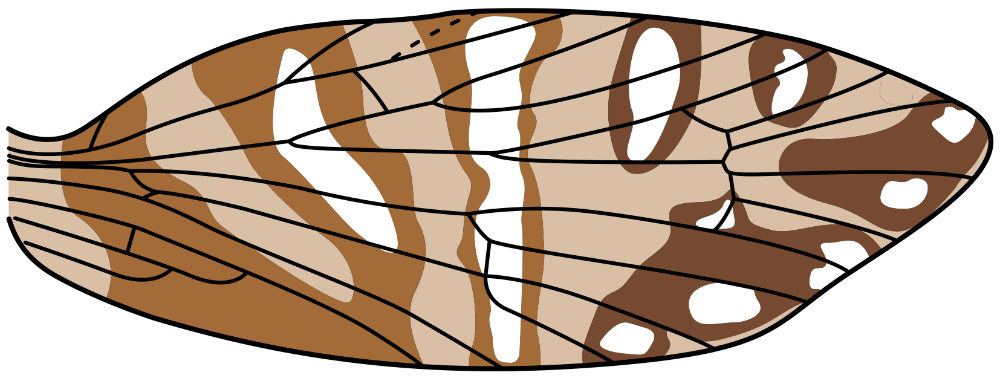The function of insect wings
Although insect wings are one of the most consequential innovations in animal evolution, wing function is still poorly understood for nearly all insect groups. Wings consist of a thin membrane that spans veins, which provide structural support, house nerves, and transmit oxygen and hemolymph. Because wings are the insect body part that is most commonly preserved in the fossil record, and because wing veins are used as taxonomic characters, a richer understanding of these veins has the potential to advance and to unite our understanding of taxonomy and functional morphology.
I began my research into wings by predicting the existence of, and subsequently documenting, wing veins that were previously unknown in Lepidoptera—a finding which demonstrates that dozens of Mesozoic fossils believed to be caddisflies may actually be moths. My documentation of these wing veins also provides a new opportunity to discern selective pressures by evaluating tradeoffs between the various functions of veins. To accomplish this, I have collected approximately 10,000 measurements of moth and butterfly wing veins. The size and taxonomic scope of this dataset allow me to distinguish between various structural and physiological optima. I have found that stabilizing selection increases with body size, but not linearly: the strength of selective pressures decreases precipitously when wings become smaller than the first insect wings, which appeared during the Pennsylvanian Period and measured approximately one centimeter in length.
The evolution of wing patterns in moths: history and homology
“[T]he questions as to whether longitudinal or transverse markings are the most primitive, the number of the possible longitudinal stripes, their use, and the kindred questions seem to be decided so much by the caprice of the individual investigator, that a non-specialist may be permitted to retire from the field until the parties concerned have been able to patch up some sort of a truce.”
– Marion Isabel Newbigin, 1898
I continue to conduct research into the evolution of wing pattern in Lepidoptera. which was the subject of my M.S. thesis. The “nymphalid groundplan,” which outlines the elements of butterfly wing patterns, has been studied and refined for over a century, but we know far less about the wing patterns of moths. What is the ancestral wing pattern for crown Lepidoptera—does it contain spots, bands, or both? Which (super)families of Lepidoptera have homologous wing patterns?

My morphological work has uncovered many homologous elements among the wing patterns of butterflies and of Micropterigidae, the most early-diverging lineage of Lepidoptera whose wings have identifiable pattern elements. Recently I have focused on wing patterns in moth lineages that diverged after butterflies: Geometridae and Noctuidae.